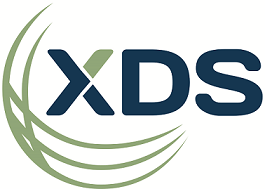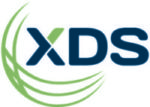The critical role of auditing
Attaining and maintaining compliant taxpayers is the core of your job. However, that does not mean it is easy. States rely on voluntary compliance with tax laws to fund state government and assist local government. Maintaining a high level of voluntary compliance requires some checks and balances. In some cases, enforcement efforts need to be audits. Audits are the most effective compliance tool available to state agencies. However, audits are lengthy and expensive. When combined with staffing levels controlled by tighter and tighter budgets, agency leaders must look for efficiencies to maximize all that they do – including auditor’s efforts.

Determining who to audit is one of the most challenging efforts in the audit process. Your auditors are faced with an unbelievably large population of audit opportunities. The problem is that a huge percentage of the population is compliant, which is a good problem to have. The probability of a false positive (i.e., selecting and auditing a company that is compliant) is non-productive, frustrates the taxpayers, and can trigger an avalanche of negative feedback from taxpayers, administrators and political leaders.
Identifying the least compliant taxpayer from the millions of compliant tax payers is not a simple task. Answers to the question of “who is the least compliant taxpayer” may vary, depending on who you ask. Is it the fraudulent taxpayer? The taxpayer that owes the most? Is auditing a trust tax a factor? Are specific industries or geographic locations more problematic? The answer can shift or be a combination of various elements. Using large amounts of data and the right resources to identify all scenarios creates an effective and very flexible model for audit selection.
Many states have auditors located in district or regional offices, telecommuting and out-of-state offices. Some states have assigned the audit selection task to these geographically distributed teams or individual auditors. Some states have their auditors and regional offices focus on their local geography which translates to local businesses being audited. This may make it easier to monitor persistent offenders that are in their immediate area and reduce the time and cost of travel.
Unfortunately, this approach also has some significant shortcomings. The first is the inability to objectively defend being fair and equitable audit selections. Without substantiating data, it’s difficult to overcome objections of targeting or discrimination. With the small percentage of non-compliant businesses, it is extremely hard to maintain the appropriate focus on the larger geographic area and many mid-tier businesses that avoid detection. While many auditors and managers have extensive skills and training in specific taxes, finding non-compliant businesses may not be their strength.
The benefits of effective audit selection
Effective audit selection can deliver amazing results to your department. While technology advances are available, and some may be already in-place, utilizing state-of-the art technologies and services will rapidly increase the number of productive audits and minimize the false positives. Your team can experience a much higher hourly productivity if they are receiving qualified leads. Rather than spend time searching for audit leads, they can go straight to the source detail and quantify their audit lead more rapidly and accurately. For example, here are some results from a large mid-west state:
- 80% reduction in unproductive audits
- Over 30,000 hours of auditor time saved in identifying audit leads
- Productivity gain resulting in over $33m revenue per year
- Discovery of a new audit program that resulted in over $5.5m in collections within the first six months
- Taxpayer base subject to audit reduced from millions to a few thousand
The results from a data-driven model enable fair and equitable identification, and distribution of audit leads across all tax types, industries, and geographical locations, with a strong focus on the least compliant taxpayer.
 XDS realizes that it can be very difficult to move to data-driven audit selection. We exist to help you realize that transition quickly and easily. To get into more details on the art of data science, return for our next post in the series: Pivoting to Data-Driven Audit Selection.
XDS realizes that it can be very difficult to move to data-driven audit selection. We exist to help you realize that transition quickly and easily. To get into more details on the art of data science, return for our next post in the series: Pivoting to Data-Driven Audit Selection.
